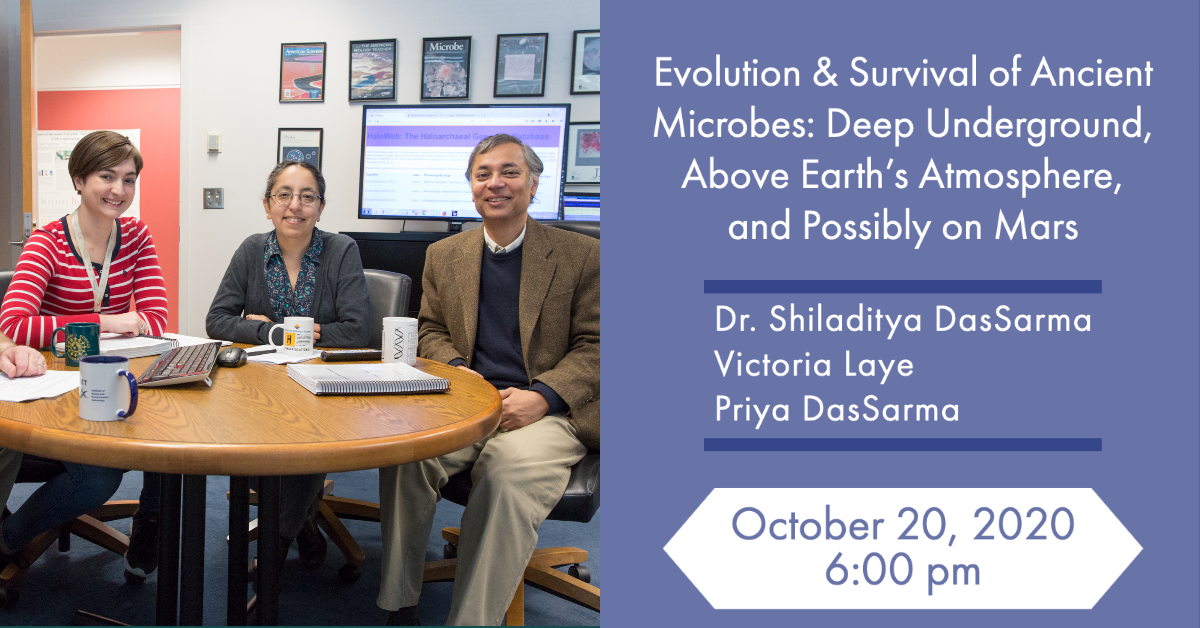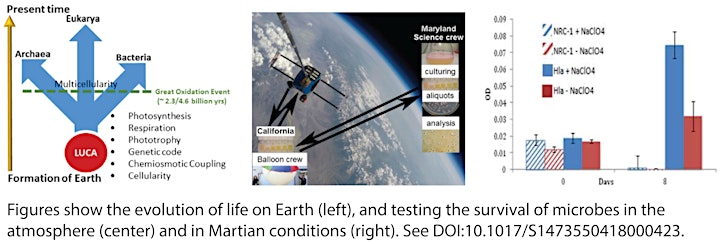Evolution & Survival of Ancient Microbes
Public Lecture Series

Life on Earth evolved from a common ancestor ~4 billion years ago and shares a universal genetic code and the same set of biological molecules. The DasSarma Laboratory is studying a group of ancient microbes, known as “Archaea” that survive some of the most inhospitable environments. By isolation, genomic sequencing, and characterization of their molecular and biological properties, they have developed insights into some of their earliest evolutionary inventions, unusual lipid membranes surrounding cells, buoyant nanoparticles for flotation, and purple vitamin A-protein antenna for capturing solar energy, which may have evolved at a time before the invention of green photosynthesis.
The microbes’ ability to tolerate multiple extreme conditions, including intense ultraviolet and ionizing radiation and low to no oxygen, allows them to survive buried deep underground in rock salt over 250 million years old and 30 km high above 99 % of the atmosphere. They also survive exposure to perchlorate oxidizers common on Mars and even grow by ‘breathing’ this chemical used as a component of rocket fuel.
This presentation will provide an introduction to what these remarkable ancient microbes have taught us about the evolution of life on Earth as well as the potential for life on Mars.
Funding for this research in the DasSarma Laboratory is provided by a grant from NASA.
RSVP on Eventbrite to receive a link for the lecture. Attendees will receive a link to join the lecture 48 hours prior to the event. Please email imetdirectorsoffice@umces.edu with any questions.
Speakers:
Dr. Shiladitya DasSarma Professor, Institute of Marine and Environmental Technology, University of Maryland School of Medicine, Baltimore, Maryland, and Blue Marble Space Institute of Science, Seattle, WA
Victoria Laye Graduate Student, Institute of Marine and Environmental Technology, University of Maryland School of Medicine, Baltimore, Maryland
Priya DasSarma Lab Manager, Institute of Marine and Environmental Technology, University of Maryland School of Medicine, Baltimore, Maryland





